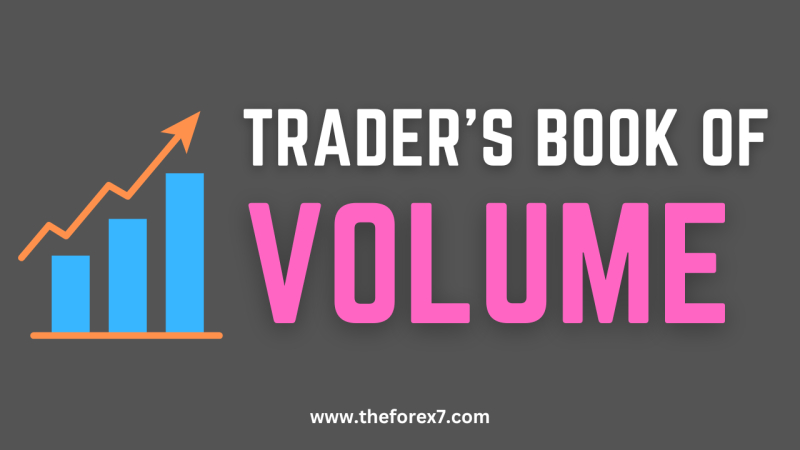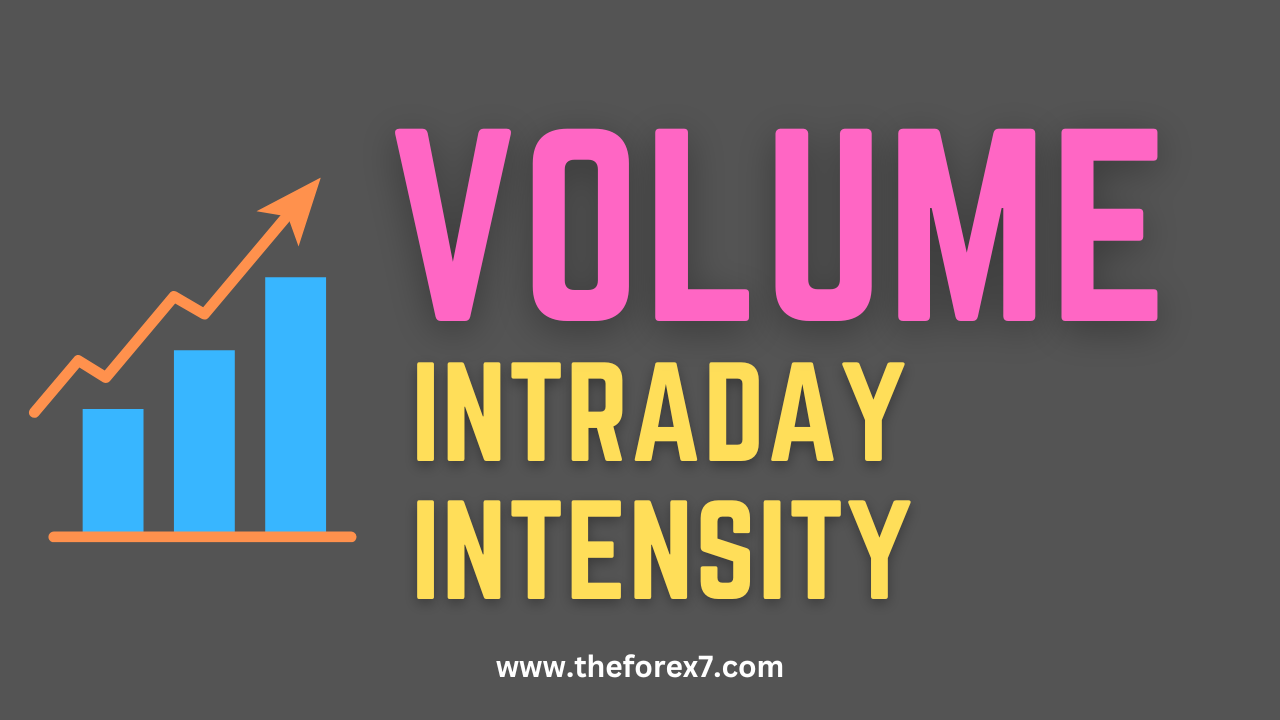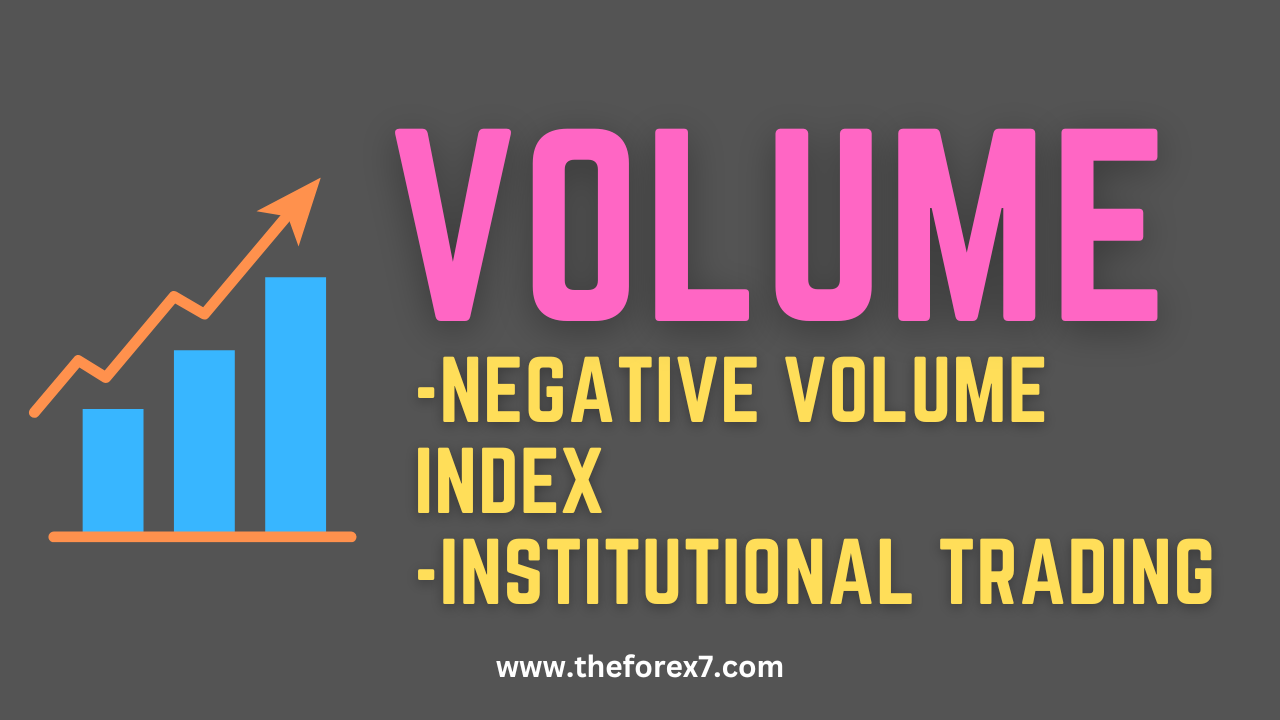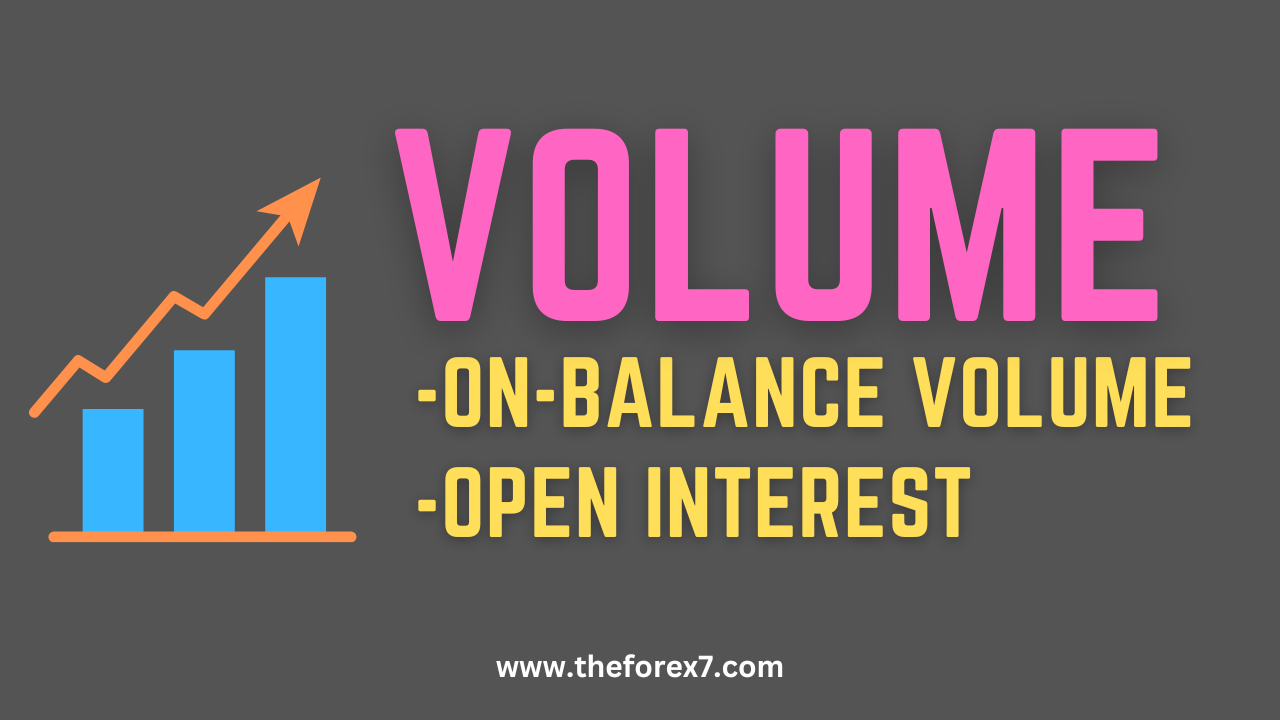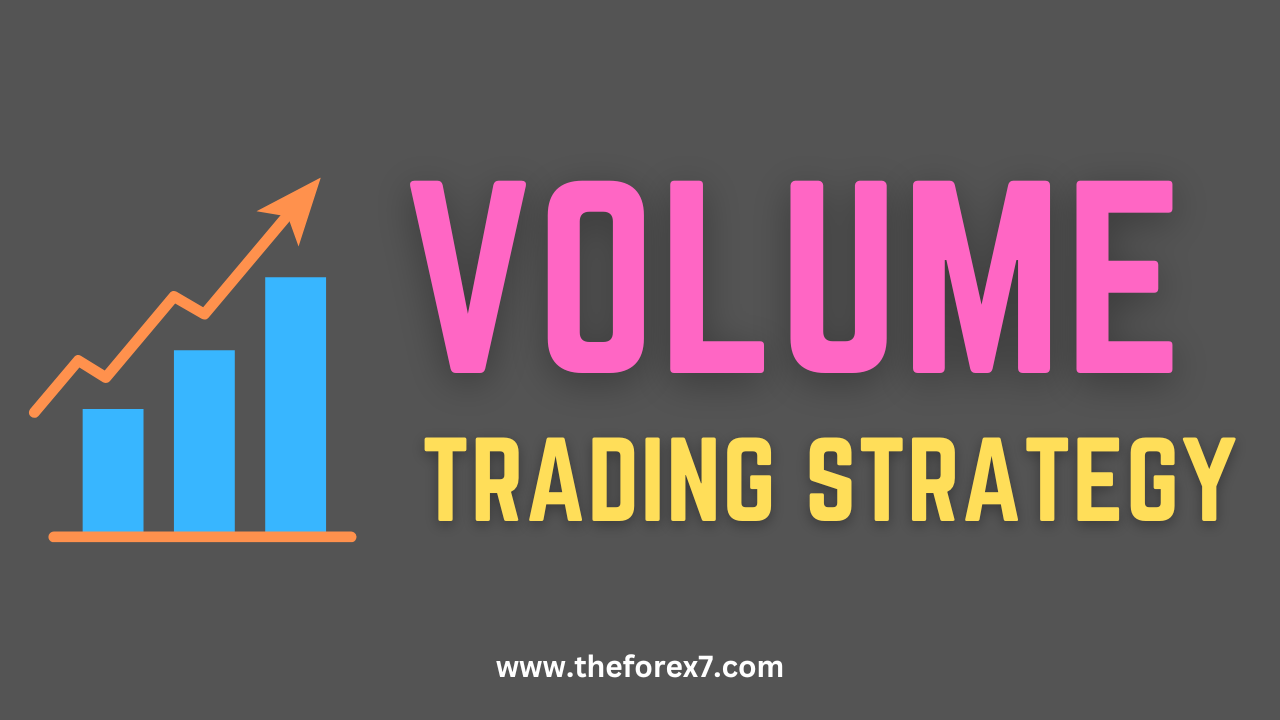The Ultimate Guide to Using Volume Indicators in Trading
Market indicators, Oscillators, Volume-based indicators, Reversal, Index, Price Trend, Entry, Exit
Course: [ The Traders Book of Volume : Chapter 9: The Volume Indicators ]
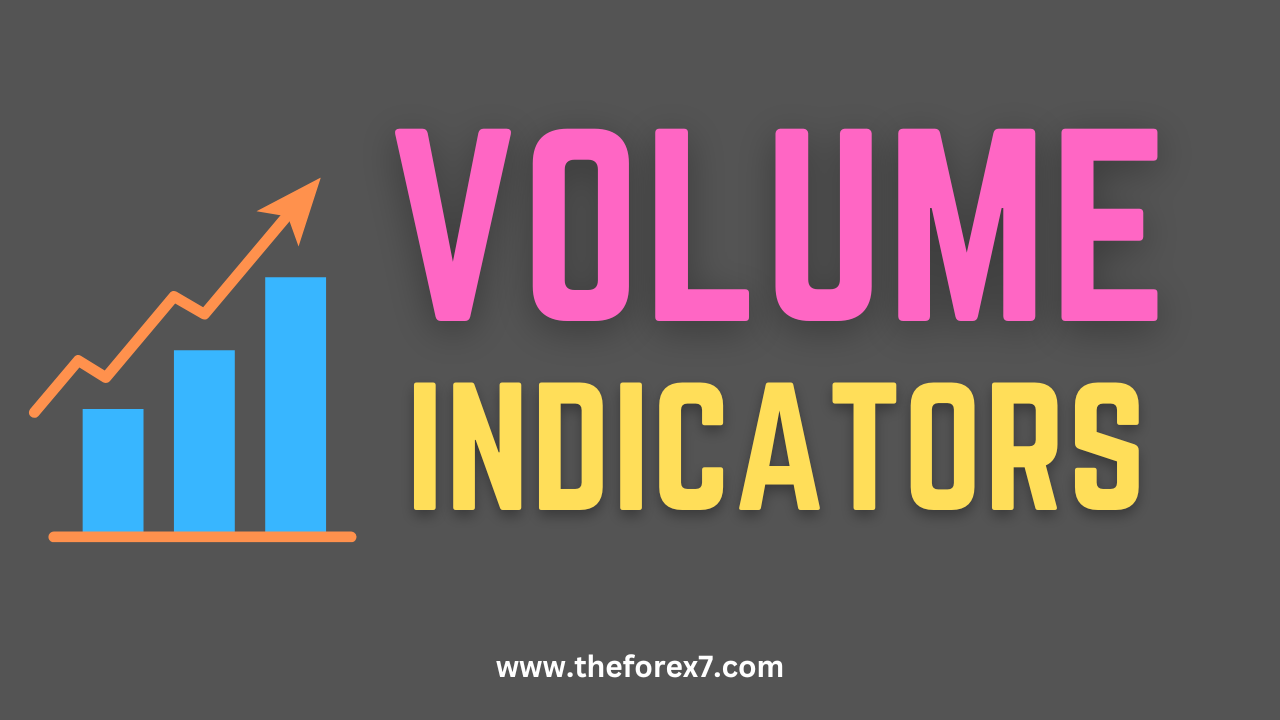
The guide covers various volume indicators, such as on-balance volume (OBV), volume-weighted average price (VWAP), and accumulation/distribution (A/D) line, and provides practical examples of how traders can use them to make informed trading decisions.
THE VOLUME INDICATORS
We now move forward from broad market
indicators and oscillators to focus on volume-based indicators used in
analyzing and trading specific securities.
We have categorized these indicators as volume indicators because each has a volume component in its formulation. Although no compilation is ever complete, we have attempted to include those volume indicators most widely used by traders. Chapter 9 lays out 10 specific volume indicators:
·
Accumulation/Distribution
·
Equivolume
·
Intraday Intensity
·
Leibovit Volume Reversal
·
Negative Volume Index
·
Positive Volume Index
·
On-Balance Volume
·
Open Interest
·
Volume Price Trend
·
Volume Rate of Change
Each indicator is described, and
accompanied with chart examples and examples of various uses of the indicator
or variations of that indicator. To help explain how these tools are put into
practice, there is a sample trade setup and execution for each indicator,
followed by an assessment of the strengths, weaknesses, and overall
applicability of each indicator.
At the end of the chapter, you will
find some techniques to make these indicators even more user friendly for
Volume Analysis.
When reading through these discussions,
you may find it useful to focus on the indicator chart, the volume bar chart,
and the relationship between the two. This dual observation will allow you to
discern how the volume component acts within the indicator, and offers
assistance in timing your trading strategy. Once you have familiarized yourself
with this relationship, you will be better able to assess the pattern of
behavior of each individual indicator under varying market conditions.
Specifically, the chart examples are designed to give you a view of how the
indicator appears in bullish and bearish market scenarios, how it behaves with
regard to positive and negative divergences, and other useful analytic setups.
Know Your Indicator
When looking at the examples below, it
is essential to understand what the indicator is measuring. In reality there
are two types of volume indicators. The first type is computed using a
combination of price and volume data (e.g., Accumulation/Distribution, Leibovit
Volume Reversal, and On-Balance Volume). The second type is computed using only
volume data (e.g., Volume Rate of Change). When you begin to use your
indicator, notice which type of tool you are using and what it is actually measuring.
Some indicators will behave differently for different securities, and some
indicators will be easier or more difficult for you to use. Note how
successfully the indicator diverges from the price trend, more slowly or more
quickly, in a more subtle or more pronounced way. And are there shifts in the
ranges of the indicator? In these examples, you will see the volume indicators
paired with other technical non-volume-based tools. Often we have chosen price
momentum indicators or overbought/oversold indicators in an effort to capture
the most data on a trading chart with the least overlapping or redundancy of
information for trade setups or entries. This should serve as food for thought
in regard to how volume indicators can be used with other non-volume-based
indicators in your own trading system.
Tradeworthy Trend or Not?
In Chapters 8, 9, and 10, we suggest
trade setup and entry positions. We are in no way advocating a trading system.
However, we want you to note that almost all technical-analysis-based trading
systems do work to identify trends and provide confirmation of, or spot,
divergences. The solution we present here is how to best enhance your current
trading system using volume indicators. If we were to take a simplistic view,
most trading systems are based upon trading in the direction of the trend,
including consolidations and continuations, or against the trend, recognizing
divergences and reversal patterns. In our previous discussions, we discussed
how to identify the trend and how to confirm the health and strength of a
trend, and we looked at different trading patterns that might signal setups for
us. Now we view the indicators in different trading environments so that you
can get a feel for how they might actually look in your trading system. Many of
the trading examples use divergences as an illustration. However, as we all
know, there are as many ways to trade as there are traders.
Accumulation/Distribution
The Accumulation/Distribution line
measures whether traders are accumulating (i.e., buying, on a net basis) or
distributing (i.e., selling, on a net basis) shares by combining price momentum
with volume. This indicator is most effective before turning points, as volume
precedes price. In many cases, volume patterns change before price turns, which
shows a change in trader sentiment. Volume-based indicators catch these changes
in sentiment, suggesting that a change in trend could be imminent. This line
should not be confused with the accumulation/distribution index originally
developed by Larry Williams.
The Accumulation/Distribution line was
taken several steps further when the innovative market technician Marc Chaikin
set out to improve upon the very popular On-Balance Volume indicator (OBV).
Whereas OBV accumulated volume based on the relationship from one day’s closing
price to the next, Chaikin wanted to quantify the close as to whether the
period s action was positive or negative. His methodology compared the close to
the midpoint of the range in order to determine whether the periods action was
positive or negative.
Formulation
The Accumulation/Distribution line is
actually computed in two parts. First, the formula finds the close location
value, or CLV:
CLV =
[(close - low) - (high - close)] / (high - low)
Chart 9.1 Accumulation/Distribution,
Nasdaq 100 Trust ETF (QQQQ)
The CLV can have a maximum value of 1
if price closes at its high for the period, and it can have a minimum value of
— 1 if price closes at its low for the period. Any close above the midpoint of
the period will have a value greater than zero, and any close below the
midpoint of the period will have a value less than zero. If price closes at the
exact midpoint of the period, the value will be zero
Next, the formula calculates the
Accumulation/Distribution (A/D) value for the period as follows:
A/D line =
yesterdays A/D value + (CLV X period volume)
The Accumulation/Distribution indicator
is a cumulative indicator, meaning that each day’s reading is simply added to
or subtracted from the previous days total. This running total methodology
allows a trader to spot systematic accumulation or distribution of shares and
is most useful for spotting divergences. Chart
9.1 shows a plot of Accumulation/Distribution for the Nasdaq 100 Trust ETF
(QQQQ).
Accumulation
In Chart
9.2, notice the range-bound trade of Amazon.com (AMZN) from June through
September 2009 as depicted by the horizontal lines.

Chart 9.2 Accumulation/Distribution,
Positive Accumulation, Amazon.com
Next, look in the lower frame, which
shows Accumulation/Distribution rising during the same time period. That shows
accumulation of shares, which ultimately resulted in an upside breakout in
September.
Distribution
In Chart
9.3, note how the price of Microsoft (MSFT) rallied to a high in April
2008, then began to move lower. Price declined into July, where it consolidated
until August. Note that while price was in its two-month range,
Accumulation/Distribution was still moving lower, indicating distribution. The
downside break that followed in September and October 2008 continued into March
2009.
Trend Confirmation
The Accumulation/Distribution indicator
is an excellent tool for revealing and confirming the strength of a move in
price. In Chart 9.4, the iShares
High Yield Corporate Bond ETF (HYG) put in a significant bottom in March 2009.
Following that bottom, HYG rallied 47 percent into early 2010. The
Accumulation/Distribution indicator showed that volume was indeed supporting
the price action as HYG pushed higher throughout 2009.

Chart 9.3 Accumulation/Distribution,
Negative Distribution, Microsoft Corp.

Chart 9.4 Accumulation/Distribution,
Uptrend Confirmation, iShares High Yield Corporate Bond ETF

Chart 9.5 Accumulation/Distribution,
Downtrend Confirmation, Citigroup
The market top in the fall of 2007 was caused in large part by problems in the financial sector. In Chart 9.5, Citigroup (C) saw intense distribution following that top. Citigroup had actually topped in December 2006 (not shown), but real selling pressure did not develop until October 2007, when the broader market headed south. Note how Accumulation/Distribution confirmed Citigroup s downtrend, continuing to make lower highs even as Citigroup s price rallied from March to May 2008. This is a great example to show how Accumulation/Distribution can keep a trader from buying into false corrections.
Trade Setup
Up until now, all of the examples shown
using Accumulation/Distribution have been using a daily time frame. The trade
example in the following paragraphs will illustrate the usefulness and
versatility of the Accumulation/ Distribution indicator in an intraday time
frame.
The example of the E-Mini S&P 500
futures contract in Chart 9.6 shows
the use of Accumulation/Distribution in a 60-minute time frame from May 31
through June 20, 2010. When spotting divergences with the indicator, it is wise
to be patient and wait for price confirmation before entering a trade.

Chart 9.6 Accumulation/Distribution,
Positive Divergence Trade Setup, E-Mini S&P 500 Contract
The trade setup takes the form of a positive
divergence between price and the Accumulation/Distribution indicator. Note how
price makes a series of new lows into June 8, while the indicator holds its
previous low. That is a sign of latent buying pressure, which should provide
good fuel for the next rally. A buy could have been executed when price broke
up through the downsloping resistance line drawn across the high prices made on
June 6 to 8.
Trade Entry
As price declined into its June 8,
2010, low, Accumulation/Distribution was holding its prior low made on June 1.
Also note that price action became choppy and volatile coming into the low.
That was a sign that buyers were coming in to absorb the selling. The
choppiness of the trade made it possible to draw a shorter-term resistance
line, which would provide more timely entry on a resistance line break. Chart 9.7 shows that the downsloping
resistance line was penetrated on June 8, giving a clear buy signal. The
initial protective stop should have been placed below the June 8 low of
1041.25.

Chart 9.7 Accumulation/Distribution,
Positive Divergence Trade Entry, E-Mini S&P 500 Contract
Trader Tips
Accumulation/Distribution is an
indicator that tracks trends well. It is effective for the following:
- Providing confirmation in trending situations, showing that price and volume are in sync
- Alerting traders to potential trend changes when price trend and the indicators diverge
- Showing the general flow of money into or out of a security and monitoring whether volume is increasing as the trend moves higher on increased buying pressure or lower on increasing selling pressure, demonstrate whether buyers or sellers are in control
The following are some disadvantages of
using Accumulation/Distribution:
- The Accumulation/Distribution indicator does not address gaps. As it focuses on the closing price in relation to its own range for the period, it does not consider the relationship of closing price from one period to the next. For example, if price gaps higher but closes poorly in its range, a negative reading for that period in the indicator would be produced.
- Since price is the predominant value in computing Accumulation/Distribution, good price closes on tepid volume may not show a slowing trend as readily as poor price closes in the periods range. For this reason, it is more difficult to detect smaller changes in the trend.
Equivolume
Equivolume is an indicator system that
compares price and volume and plots them together as one piece of data.
Equivolume was developed by renowned market technician Richard W. Arms Jr.,
creator of the ARMS Index, and is discussed in his book Volume Cycles in the
Stock Market.
Equivolume combines price and volume
and plots it in a single box. Instead of plotting volume separately at the
bottom of the chart, its inclusion in the price plot gives a trader both the
price and volume action of the time period in a single box. It displays the
importance of volume in its relationship to price. The height of the box
represents the high and low of the time period plotted. The width of the box
represents the volume relative to the total shares traded over that time
period. The heavier the volume, the wider the box. Typically, wider boxes that
penetrate support or resistance are very important, as the width of those boxes
shows how much conviction was behind the breakout or price move.
Box width is calculated using what Arms
refers to as a normalized value of volume. It is achieved by dividing the
actual volume for the period by the total of all volume displayed on the chart.
The width of each box plotted is based on a percentage of total volume, with
100 equaling the total of all percentages.
Equivolume is a great tool for
identifying breakouts and broad market reversals. Figure 9.1 shows some common Equivolume shapes and their meanings. Chart 9.8 shows an actual plot of
Equivolume for the Nasdaq 100 Trust ETF (QQQQ).
Trend Reversals
Equivolume is also a great tool for
recognizing individual stock trend reversals. The shape of the box stands out
clearly when there is a change in sentiment. Chart 9.9 shows by the width of
the box how volume for Cisco Systems (CSCO) increased off the February 2008
low.
Figure 9.1

Chart 9.8 Equivolume Diagram, Nasqad 100
Trust ETF (QQQQ)

Chart 9.9 Equivolume Power Box at Low,
Cisco Systems
The psychology at market tops is
different from the panicked, emotional mood at market bottoms. In Chart 9.10, a daily chart of the SPDR
Gold Trust ETF (GLD), note the small size of the boxes as GLD goes into its December
2009 high. That shows the complacency and low volatility in a typical uptrend.
Next, note the very large box following just off the price high. That torrent
of selling marked a significant reversal.
Equivolume can also show changes in
market characteristics that can alert traders to a developing trend change. In Chart 9.11, which shows 3M, note how
the boxes increase in both height and width heading into the October 2008 low.
The increase in the box sizes shows that volatility and volume are increasing,
both of which were clues that a bottom was near.
Chart 9.12, a daily chart of the S&P 500 SPDR Trust ETF (SPY),
shows how Equivolume can expose a weakening trend that is ripe for a reversal.
Notice how narrow the boxes became near the January 2010 high. That was a clue
that there was not enough volume to continue to push the market higher. The
expansion of box size following the high showed that sellers were assuming
control.

Chart 9.10 Equivolume
Chart, Power Box off of High, SPDR Gold Trust ETF

Chart 9.11 Equivolume Chart, Narrow Box
Downtrend, 3M Corp.

Chart 9.12 Equivolume Diagram, Weakening
Trend, S&P 500 SPDR Trust ETF
Breakouts
Power boxes (see
Figure 9.1) are a big part of the Equivolume methodology. If price
overcomes a resistance area with a power box, that increases the odds that the
breakout will be successful. Chart 9.13
shows two great examples of power box breakouts on the same chart for
Amazon.com.
Power box breakouts can also occur to
the downside. Chart 9.14 shows such
a downside power box breakout for the iShares Silver Trust ETF (SLV). Note the
expansion of the box from the prior day as the support level is broken.
Equivolume with Other Indicators
Equivolume is a methodology that can be
used quite effectively on its own, but combining it with a price momentum
oscillator can increase the odds of making winning trades. Note in Chart 9.15, a daily chart of the
S&P 500 SPDR Trust ETF (SPY), how combining Equivolume with a 14-day
Relative Strength Index (RSI) would work. The 14-day RSI was in oversold
territory when the power box was formed off the March 2009 low. Using power box
reversals off overbought and oversold conditions can ensure that the trade is
entered at a favorable level.

Chart 9.13 Equivolume Diagram, Power Box
Upside Breakouts, Amazon.com

Chart 9.14 Equivolume Diagram, Power Box
Downside Breakout, iShares Silver Trust ETF

Chart 9.15 Equivolume Diagram with 14-Day
RSI, Upside Reversal, S&P 500 SPDRTrust ETF
Trade Setup
One of the strengths of the Equivolume
charting method is that breakouts on volume tend to almost jump off the page at
the technician. The example in Chart
9.16 shows a trend reversal in Cisco Systems (CSCO) at its August 2006 low.
Price had been moving lower from May into August on lackluster volume, showing
that selling pressure was abating. Connecting the tops made during the price
descent produced a resistance line that would be a trade trigger for a long
entry provided the line was broken with a power box (on heavy volume).
Trade Entry
From Chart 9.16 and its “amplification” in Chart 9.17, we can see that the downsloping resistance line was
broken on August 9, 2006, with a very wide power box, which signifies that
there was a lot of buying pressure behind the one-day price move. Also note the
volume bar spike below price. An initial protective stop should have been
placed below the August 4 low of 17.10. This was a very strong buy signal.
Plotting charts using the Equivolume method makes it much easier for a trader's
eyes to spot price moves on high volume.

Chart 9.16 Equivolume Diagram, Volume
Breakout Trade Setup, Cisco Systems

Chart 9.17 Equivolume Diagram, Volume
Breakout Trade Entry, Cisco Systems
Trader Tips
Equivolume is a great indicator for the
following:
- Identifying trend reversals
- Showing clear pictures of breakouts
- Alerting traders that a change in trend may be near
For more information on the Equivolume
methodology, see Arms Insider.com.
The Traders Book of Volume : Chapter 9: The Volume Indicators : Tag: Volume Trading, Stock Markets : Market indicators, Oscillators, Volume-based indicators, Reversal, Index, Price Trend, Entry, Exit - The Ultimate Guide to Using Volume Indicators in Trading
